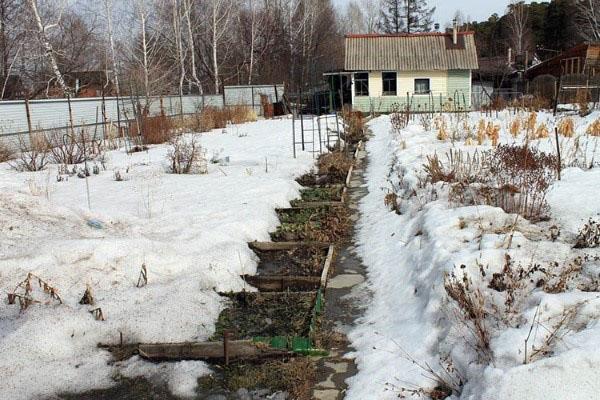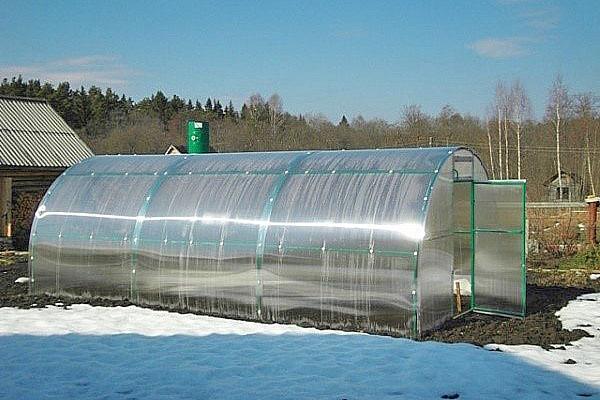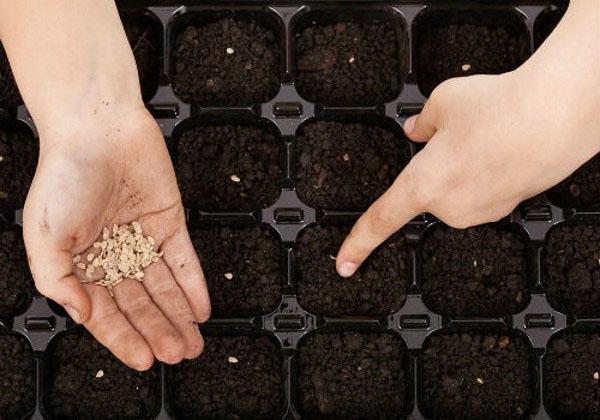What should a summer resident do in the beds in March?
 With the first spring sun, not only nature begins to wake up, but also the hardworking nature of summer residents, because over the long winter days everyone has already had time to relax in order, and their hands have just missed gardening concerns. Of course, it's too early to grab a hoe and run to the beds, but even without that, in March, summer residents have a lot of trouble in their garden beds. What are we going to do first of all to get ready for the summer cottage season?
With the first spring sun, not only nature begins to wake up, but also the hardworking nature of summer residents, because over the long winter days everyone has already had time to relax in order, and their hands have just missed gardening concerns. Of course, it's too early to grab a hoe and run to the beds, but even without that, in March, summer residents have a lot of trouble in their garden beds. What are we going to do first of all to get ready for the summer cottage season?
Checking greenhouses and hotbeds

- We carefully check the frame, replace everything that has leaked.
- We examine the coating, replace the broken glass, seal it with tape or completely replace the film material.
- We remove plant debris from the beds, throw out the retaining pegs and twines with which the plants were tied - it is better to take new ones.
- To provide our plants with maximum illumination, we wash the walls well, freeing them from accumulated dirt and dust.
- We disinfect the greenhouse. This can be done in one of the ways at the choice of the summer resident: by fumigating with a sulfur stick, spraying with bleach, or by using biological products, for example, Fitop-Flora-S.
- We replace the top layer of soil or spill the earth with a solution of copper sulfate.
- We warm up the soil, covering it with a black film.
Some gardeners in early spring cover the greenhouse beds with a snow cover - it helps to saturate the dried soil with moisture.
And what about the seedlings?
 The end of February and the beginning of March are a hot season for those gardeners who grow seedlings on their own. If you have not sown seedlings in February or have not prepared seeds, we run to the store, buy at least those crops that need to be sown now, and proceed to sowing. Do not forget to prepare the seeds in advance, namely:
The end of February and the beginning of March are a hot season for those gardeners who grow seedlings on their own. If you have not sown seedlings in February or have not prepared seeds, we run to the store, buy at least those crops that need to be sown now, and proceed to sowing. Do not forget to prepare the seeds in advance, namely:
- seed eggplant and sprout peppers before sowing by placing them in a fabric bag;
- soak the onion in a growth stimulator for the night;
- but we sow cabbage immediately from a bag, without any preparation.
We try to provide the seedlings with good lighting so that they do not stretch out, especially if the window sill in the apartment acts as a greenhouse. Of course, it is quite possible to grow seedlings at home, but it would still be better to install additional lighting.
In regions with a warm climate, where at the end of April the weather is already warm enough for planting crops in the ground, in March you can sow tomatoes and strawberries for seedlings.
We grow the first vegetables
 Particularly nimble summer residents, even in March, have time to fuss in the beds, because if the greenhouse is ready to start the summer season, you can pamper yourself with a salad of fresh radishes with a green onion grown with your own hands for Easter holidays. The first vegetables on the market always cost a lot, so if there is an opportunity, we can safely proceed to sowing cold-resistant crops such as:
Particularly nimble summer residents, even in March, have time to fuss in the beds, because if the greenhouse is ready to start the summer season, you can pamper yourself with a salad of fresh radishes with a green onion grown with your own hands for Easter holidays. The first vegetables on the market always cost a lot, so if there is an opportunity, we can safely proceed to sowing cold-resistant crops such as:
- radish;
- bow;
- spinach;
- watercress;
- greens.
And so that the parsley and sorrel that hibernated in the beds in the open field wake up faster, we install frames above them.
Cooking potatoes for planting
 At the end of March, we look into the basement and take out the seed potatoes from there (at the same time we check the rest of the vegetable stocks and eat first of all what can no longer lie there, but has not yet completely disappeared - do not throw out the good). We sort out the tubers and put all the sick or damaged ones in a separate box. They can be used for making dinner, but definitely not worth it for planting. If the potatoes are of different sizes, it is advisable to immediately sort them by size: large - to large, small - to small.
At the end of March, we look into the basement and take out the seed potatoes from there (at the same time we check the rest of the vegetable stocks and eat first of all what can no longer lie there, but has not yet completely disappeared - do not throw out the good). We sort out the tubers and put all the sick or damaged ones in a separate box. They can be used for making dinner, but definitely not worth it for planting. If the potatoes are of different sizes, it is advisable to immediately sort them by size: large - to large, small - to small.
We bring the selected high-quality potatoes into a warm room for germination. It should be borne in mind that, on average, the duration of natural vernalization of non-sprouted potatoes (which have not yet sprouted on the tubers) is about 6 weeks, and it should take place under the following conditions:
- temperature from 12 to 15 degrees Celsius;
- good lighting;
- sufficient level of air humidity.
The timing of planting potatoes varies depending on climatic conditions, so if yours is still spring and does not smell, it makes sense to wait until April with vernalization.
Well, here, perhaps, and all the March chores of the summer resident associated with the beds. Although, when planning a trip to the store to buy seeds, do not forget to check at the same time whether the necessary fertilizers are available at home for feeding seedlings and the first cold-resistant crops and whether the entire inventory is intact. It is better to prepare everything in advance than to waste precious time on searches later. Happy start of the season, dear summer residents!